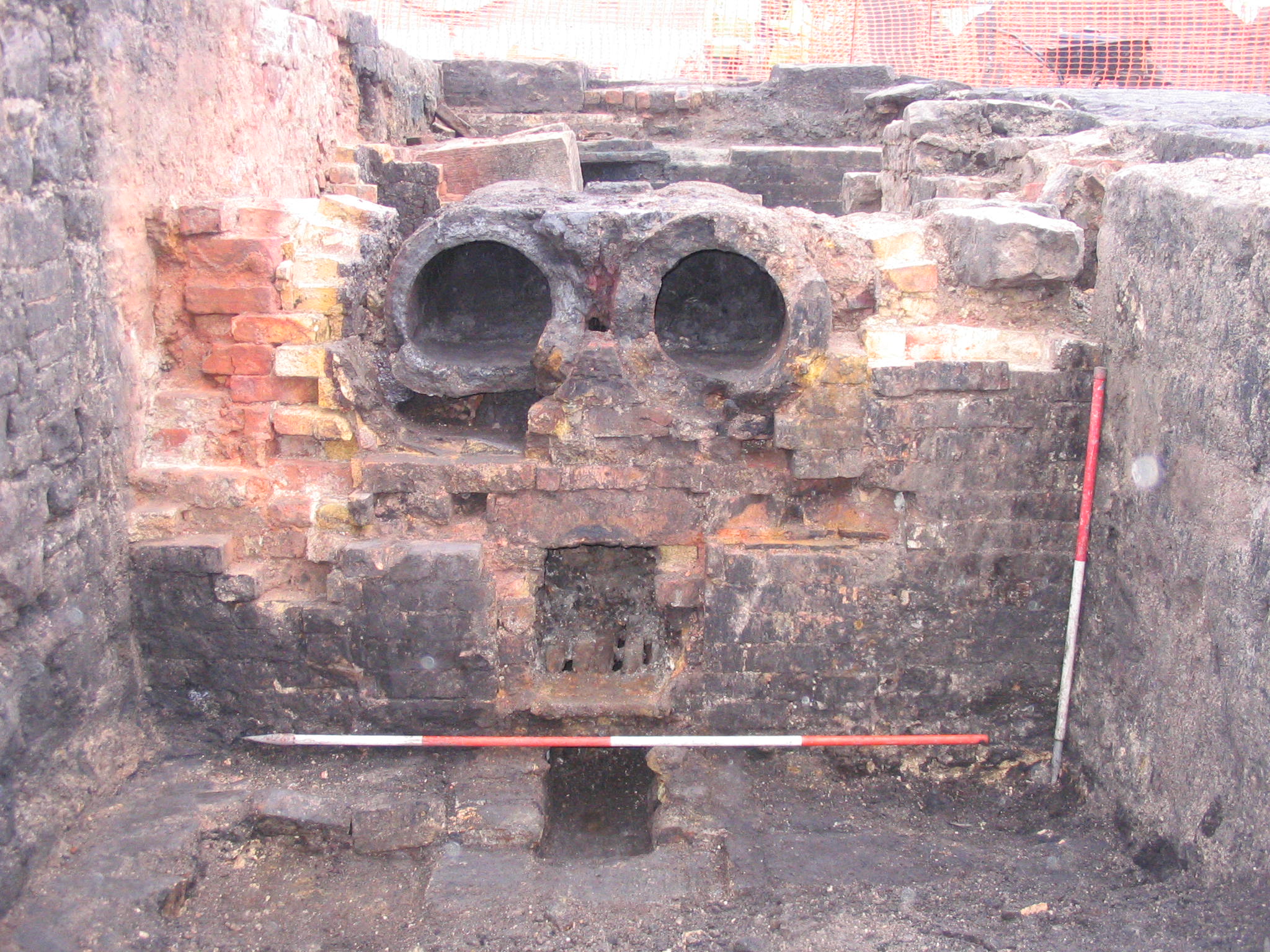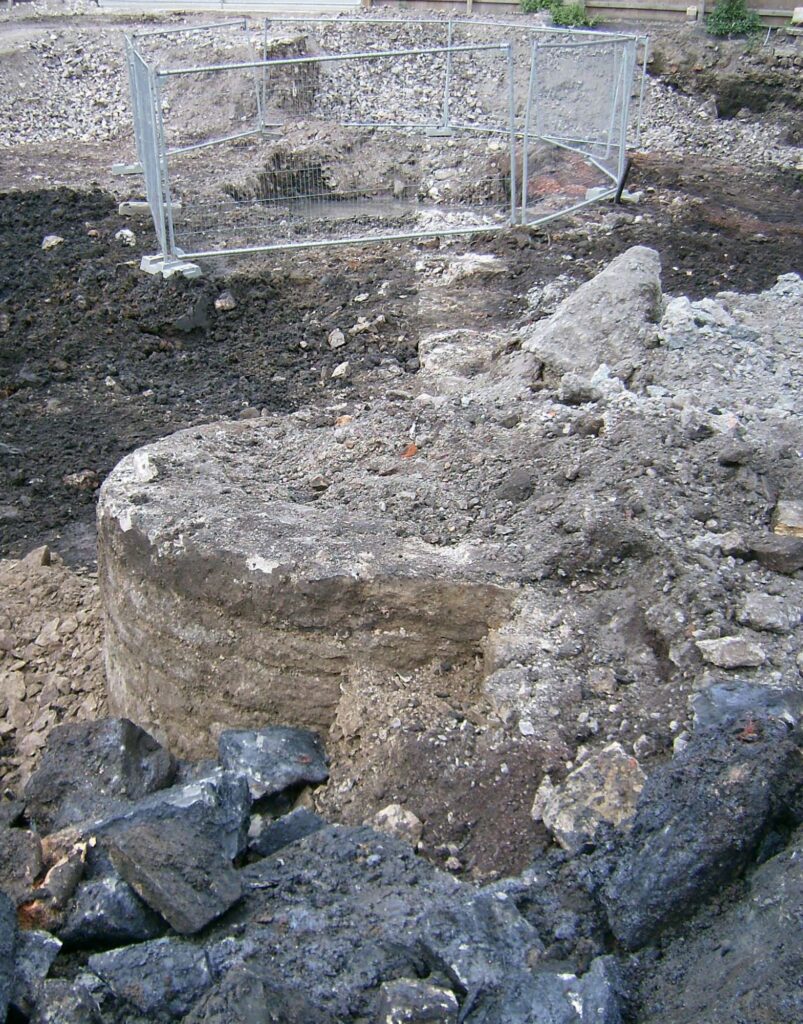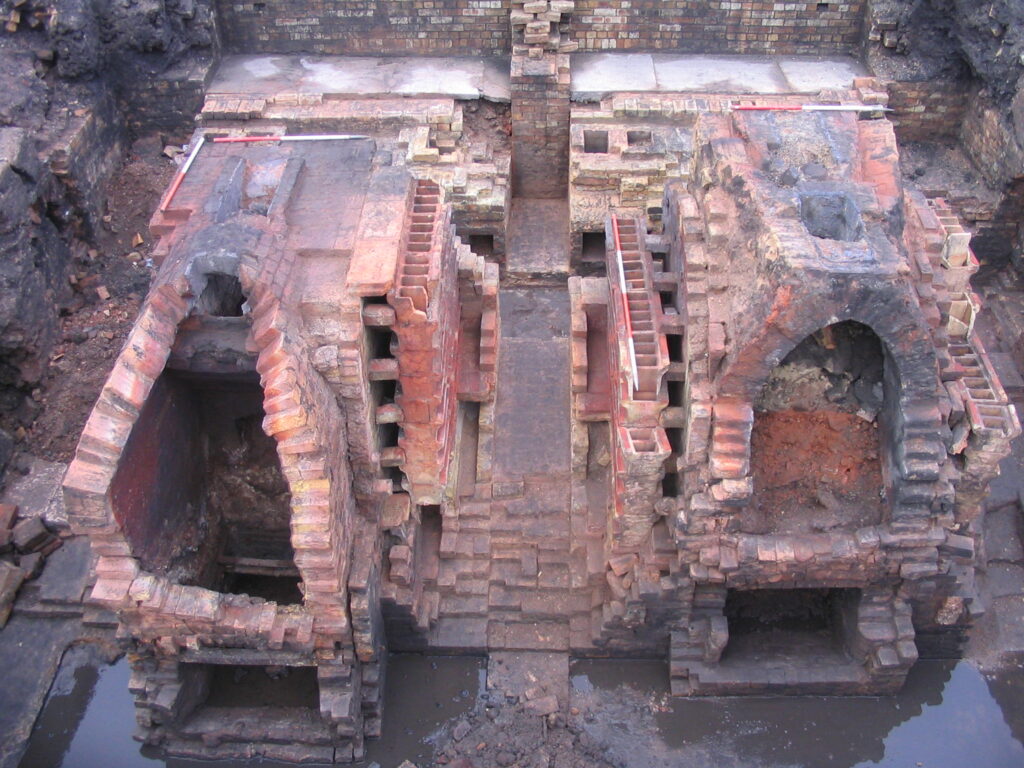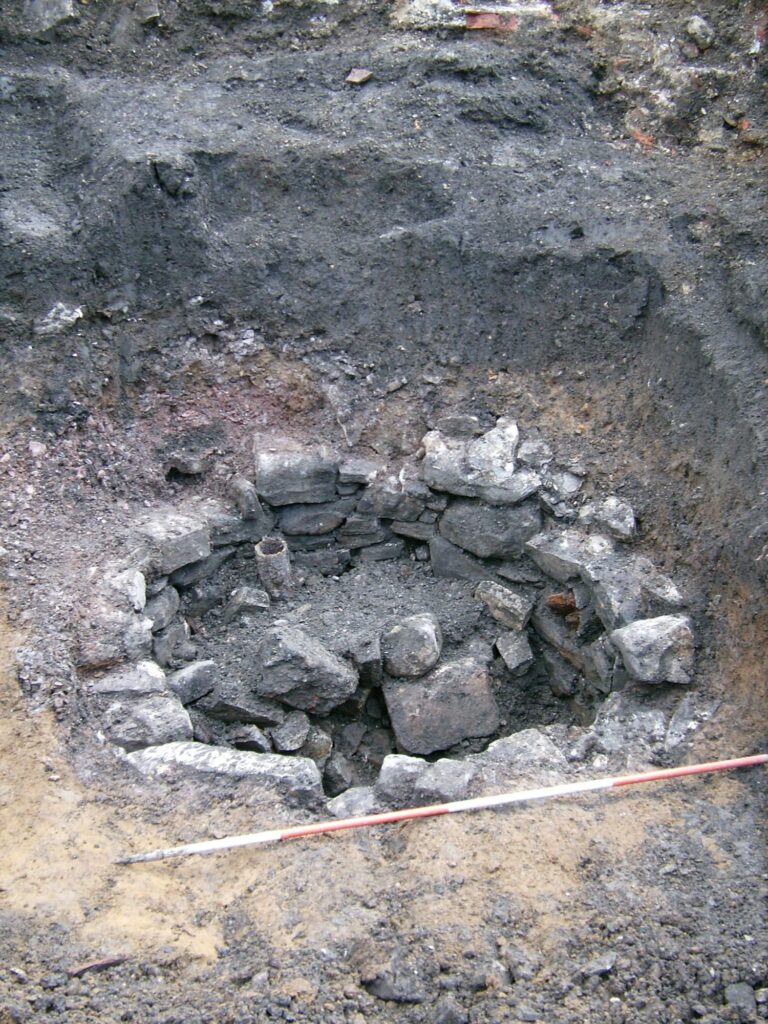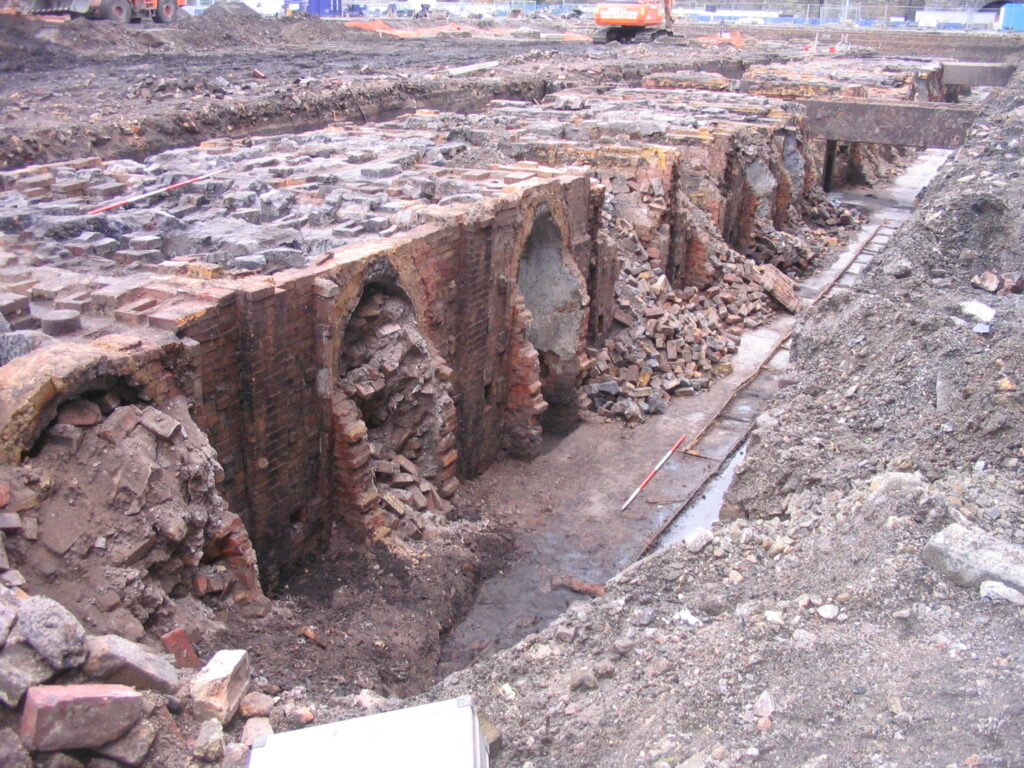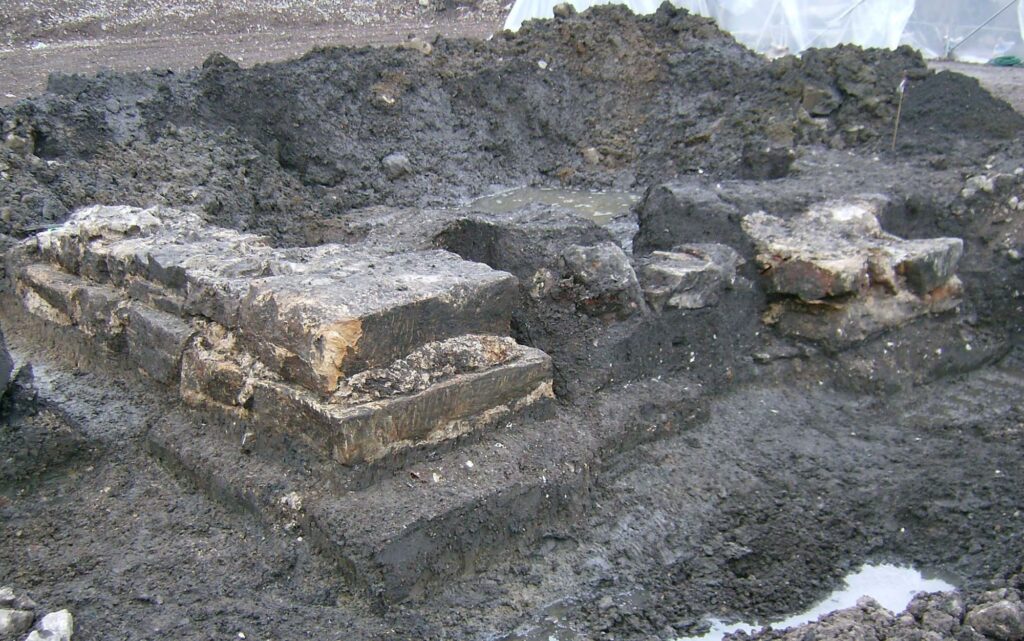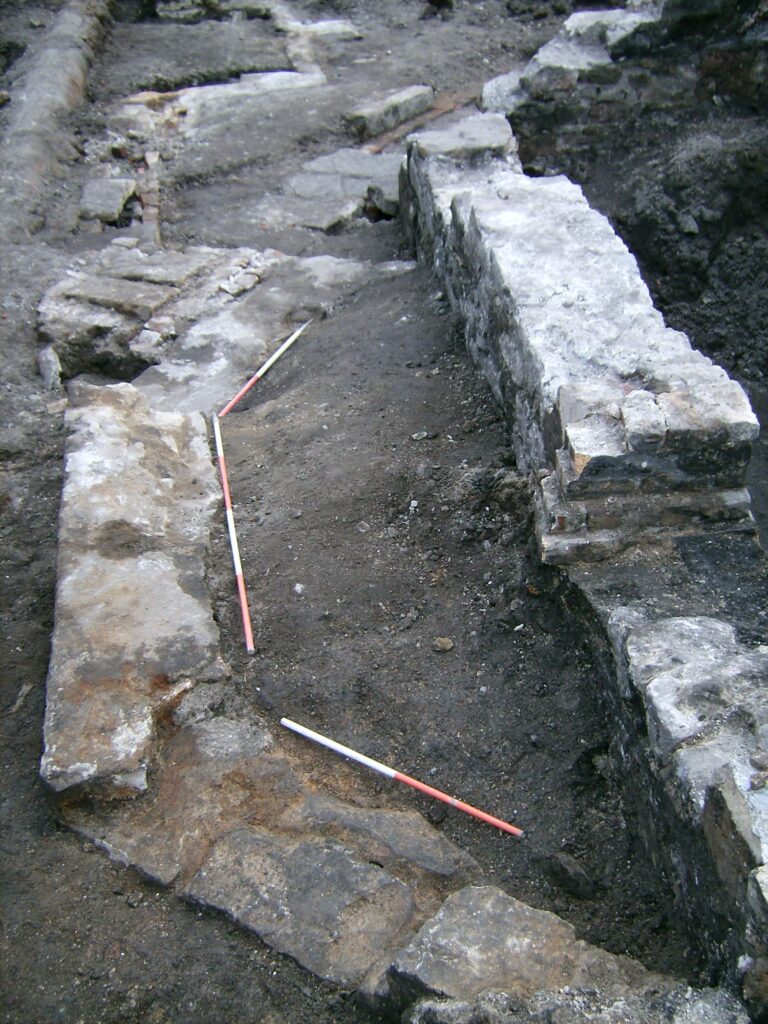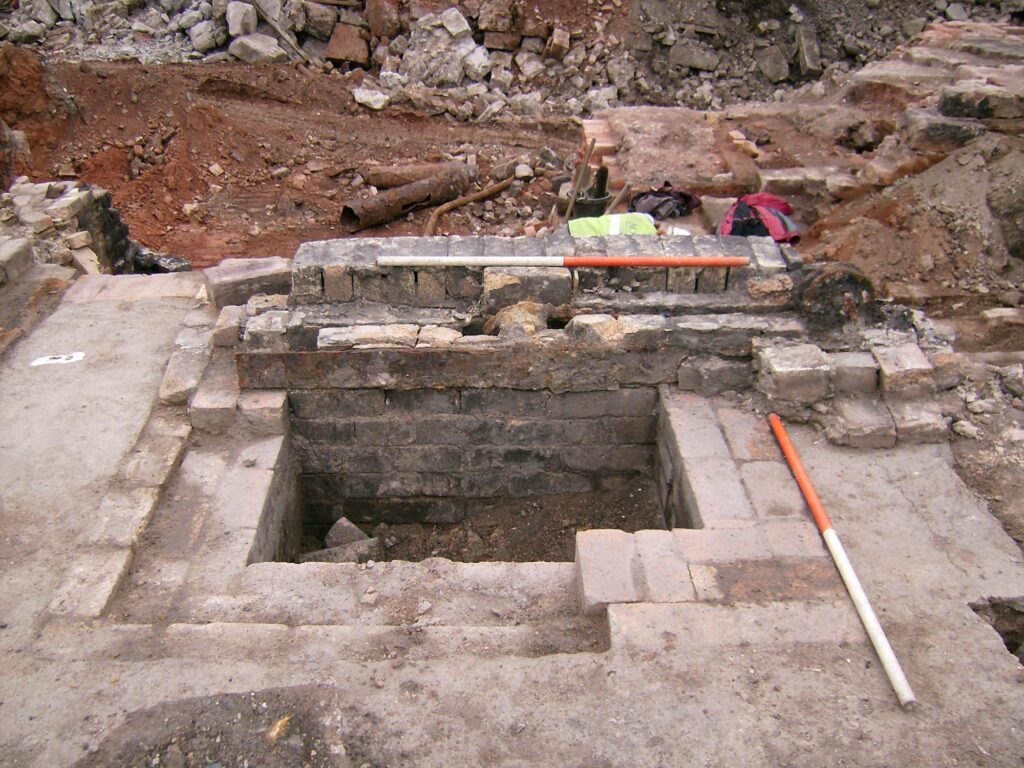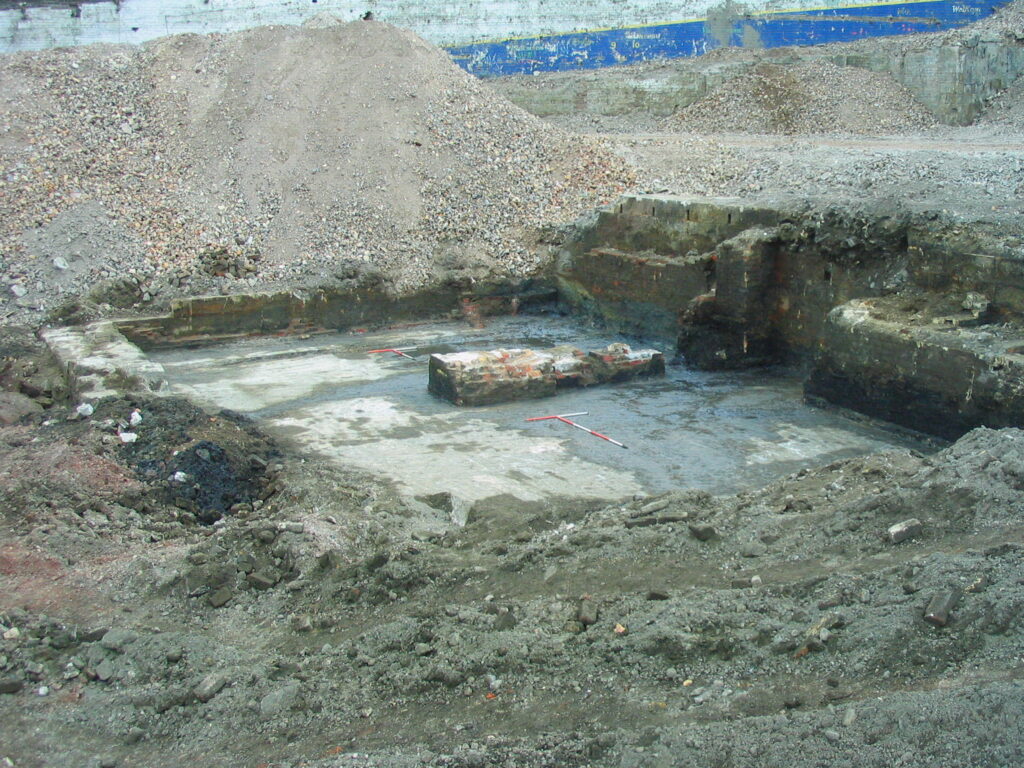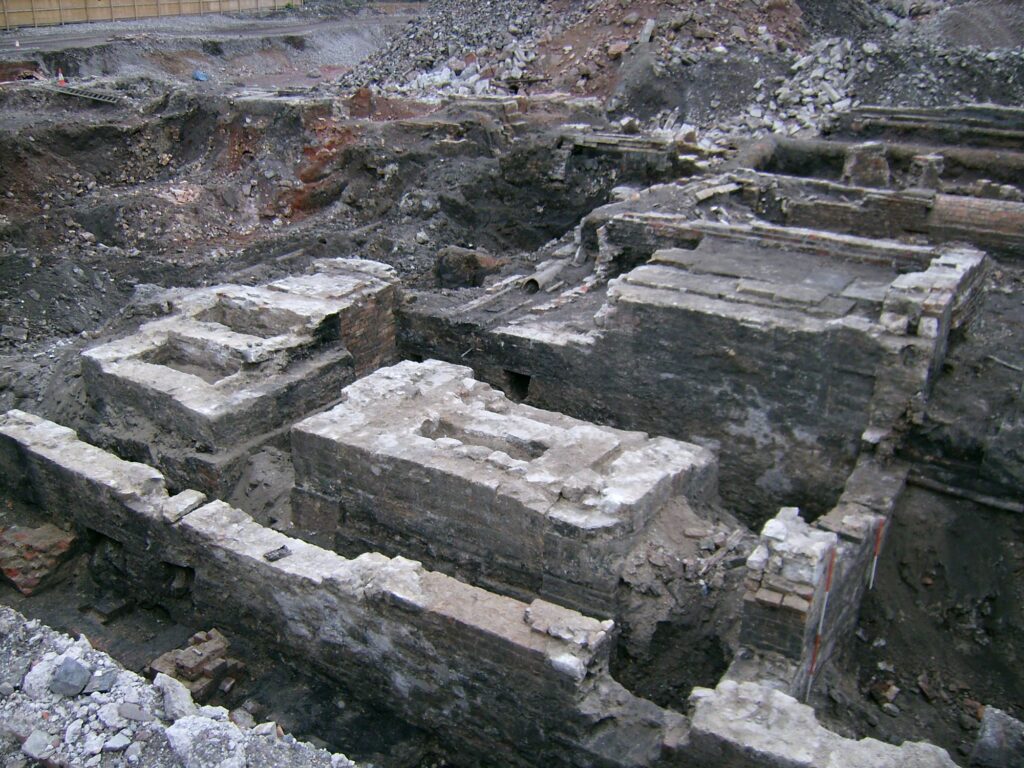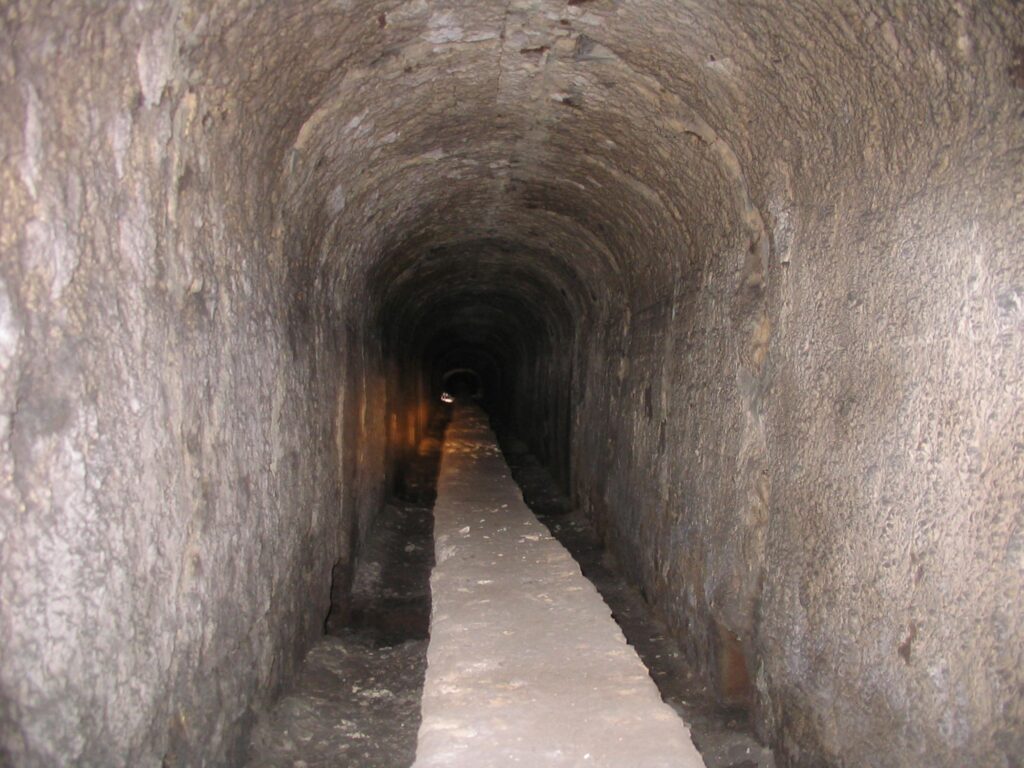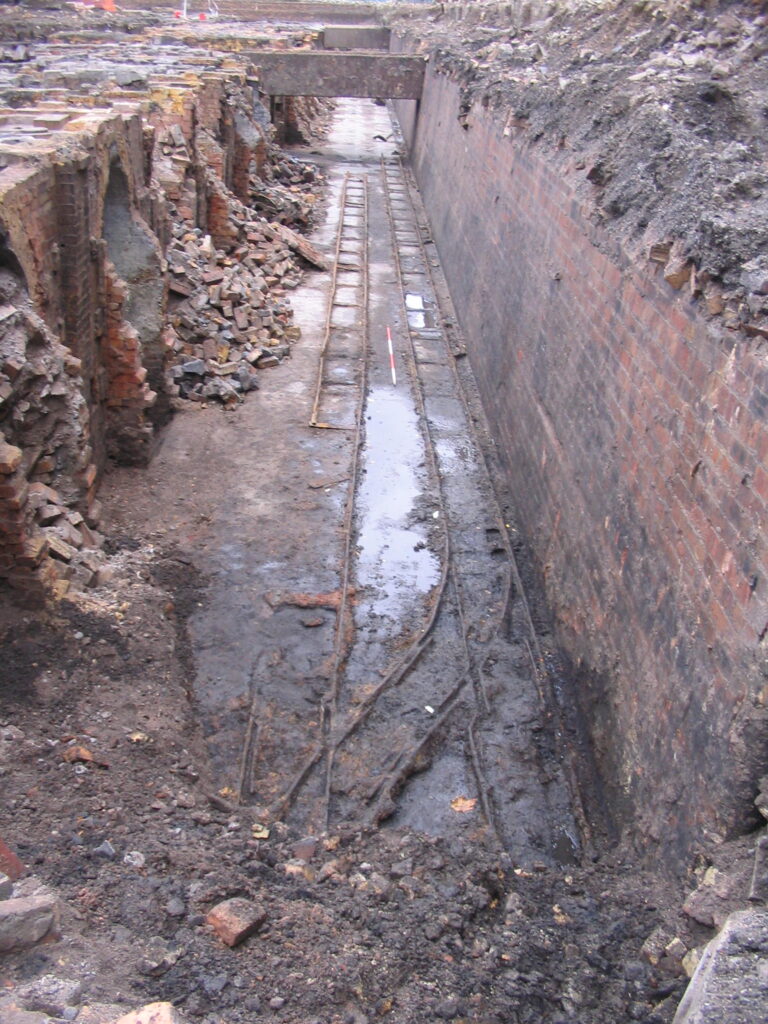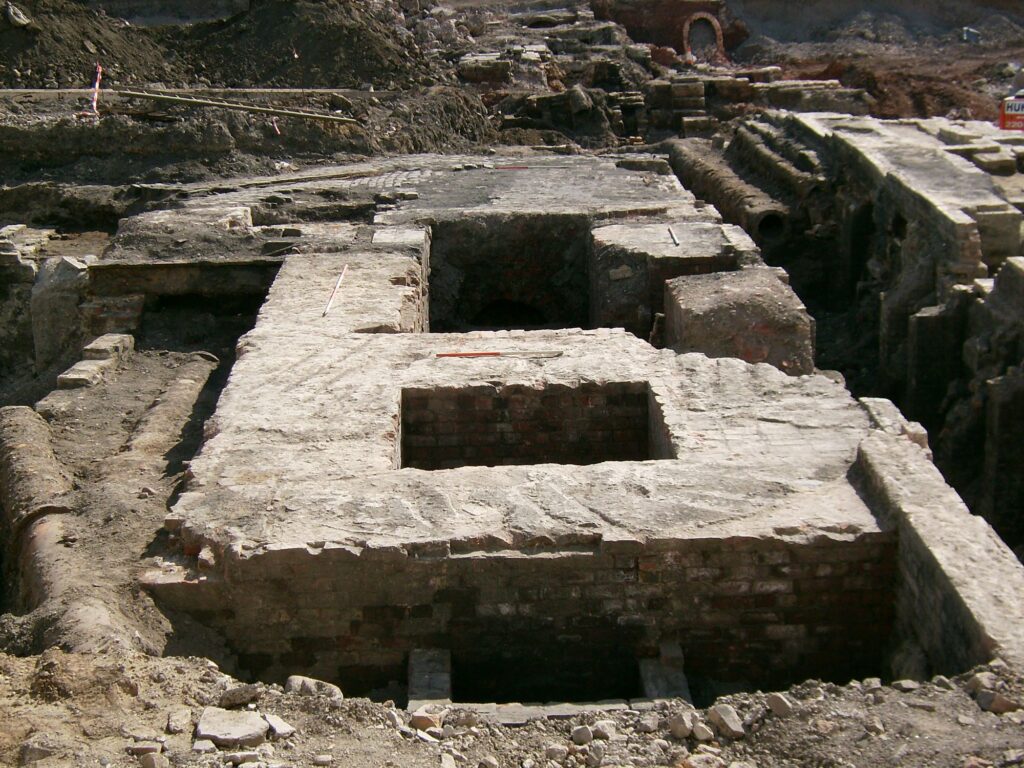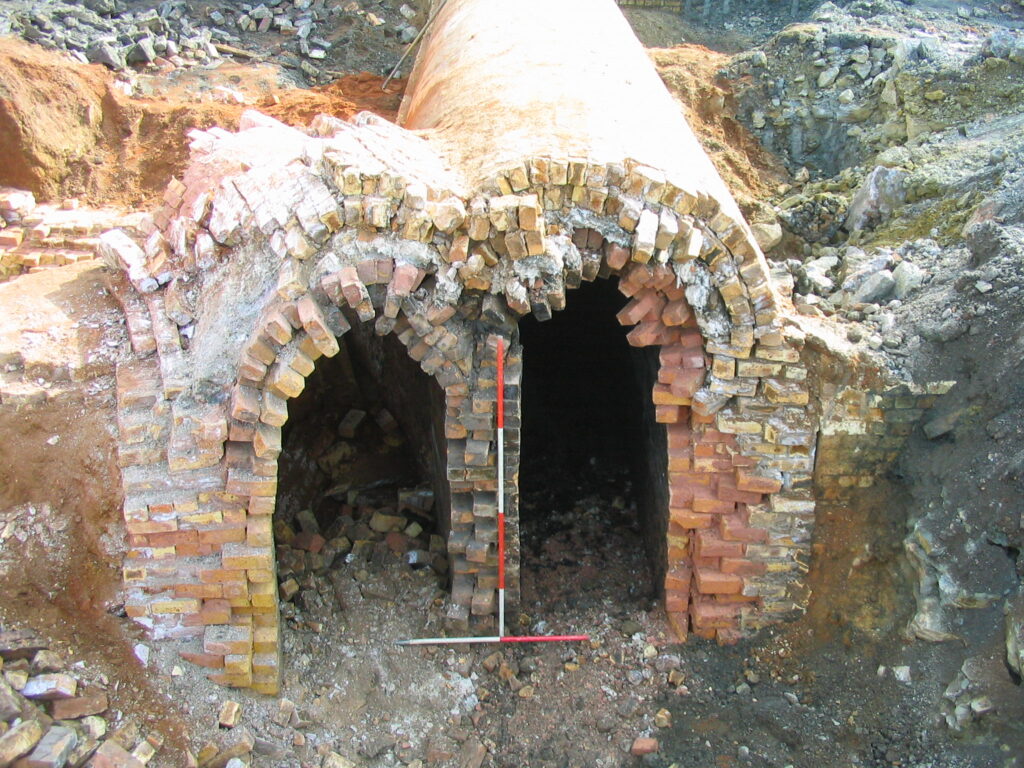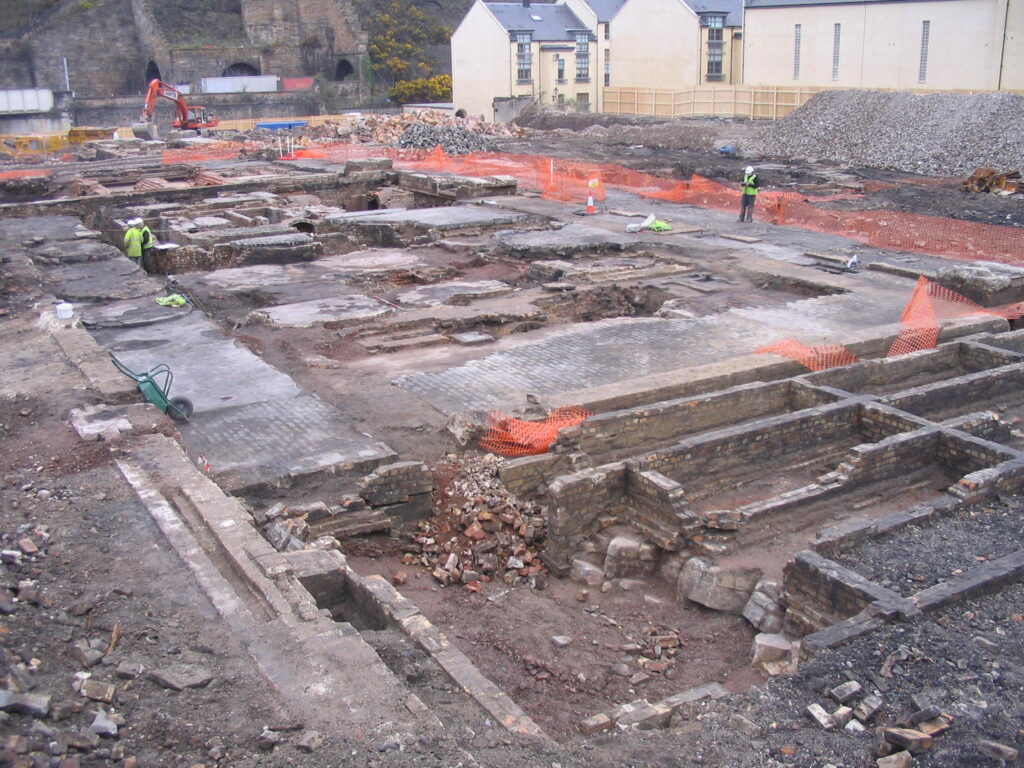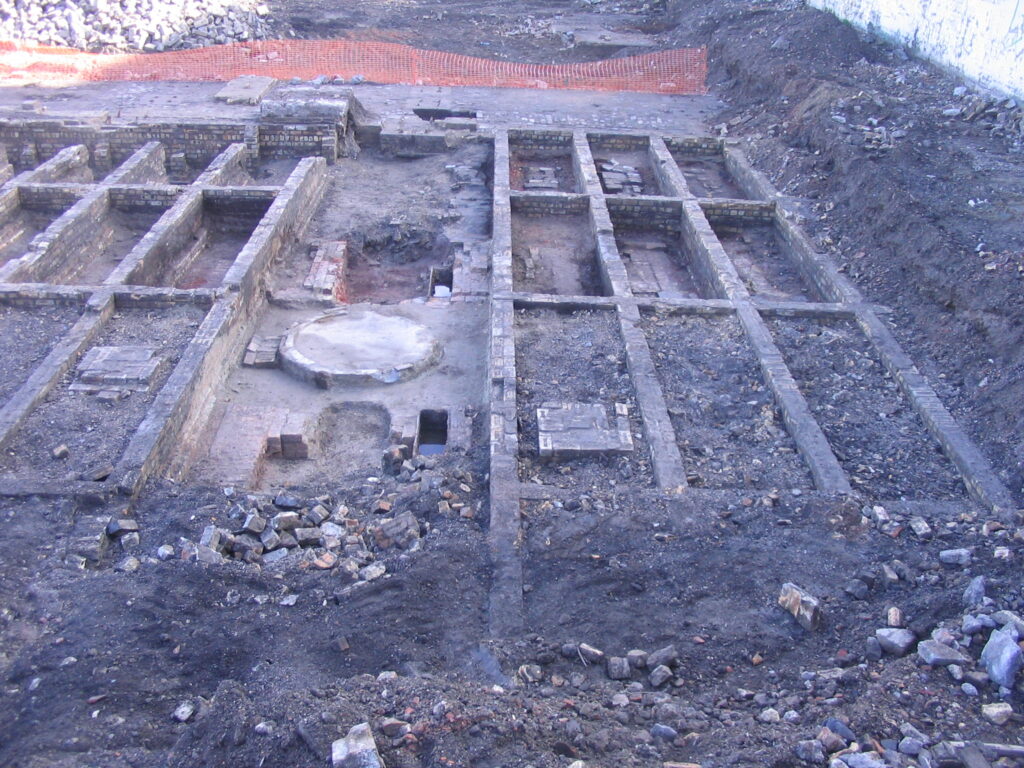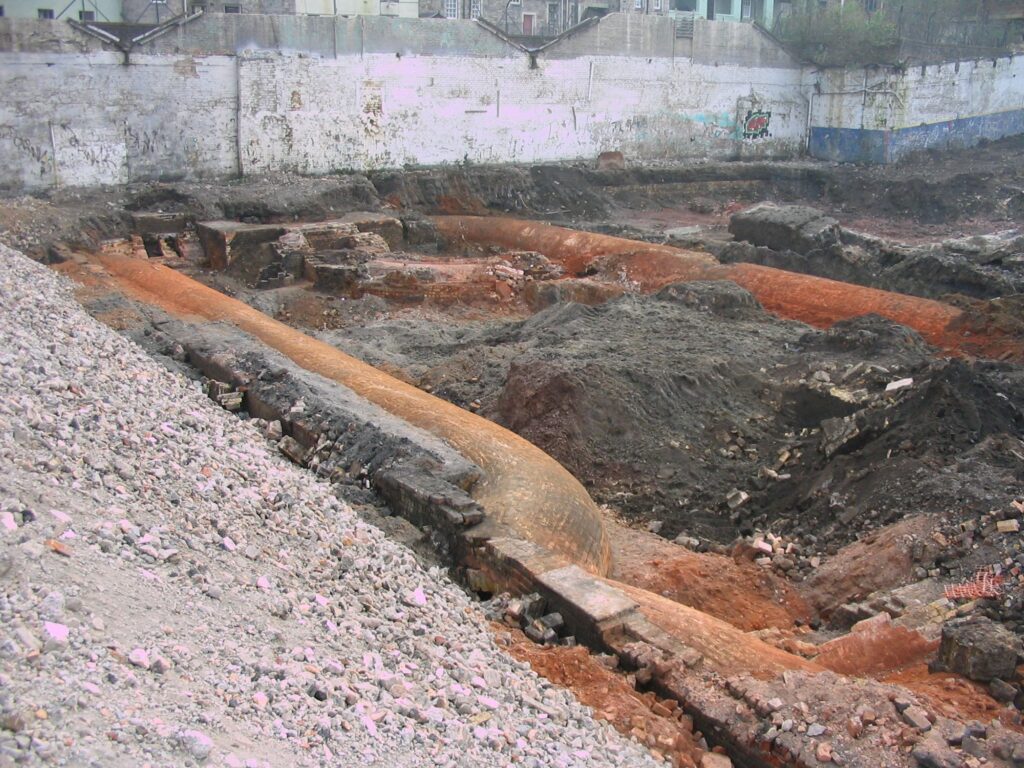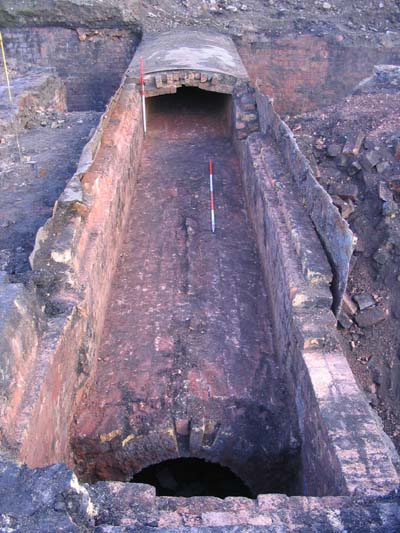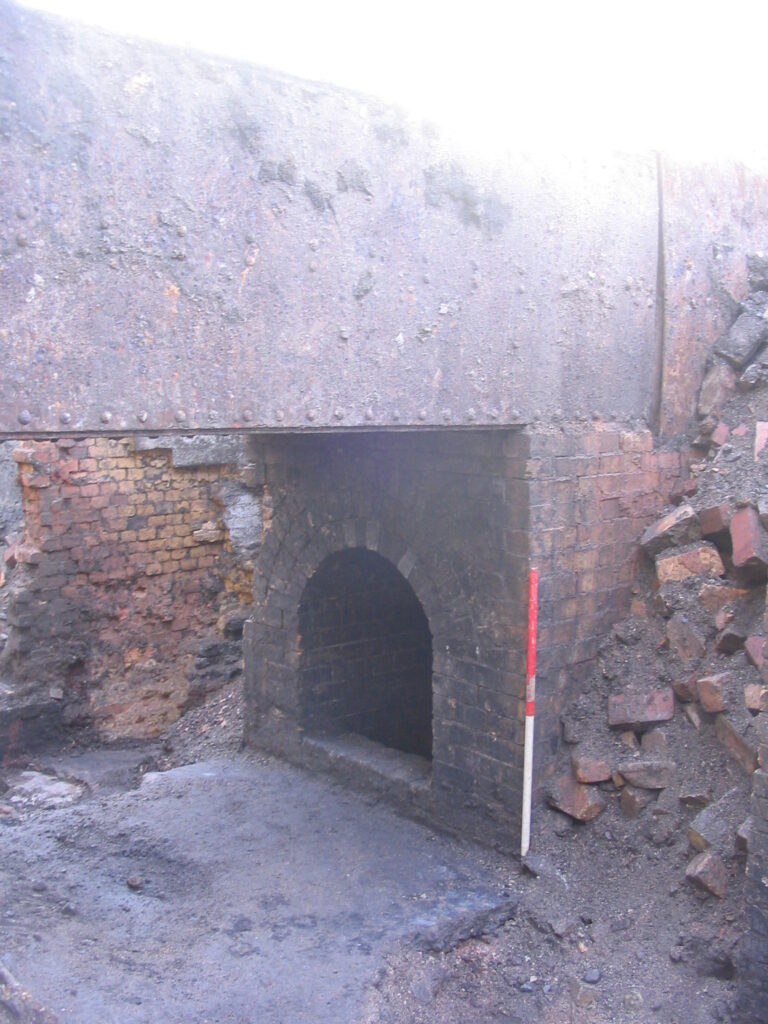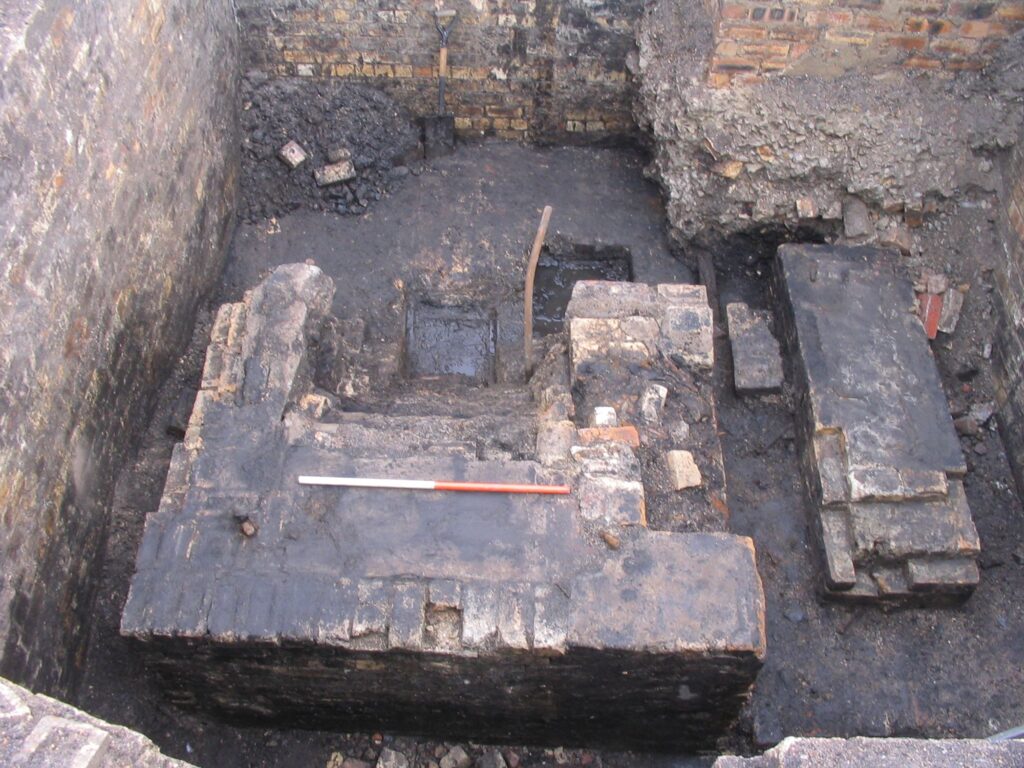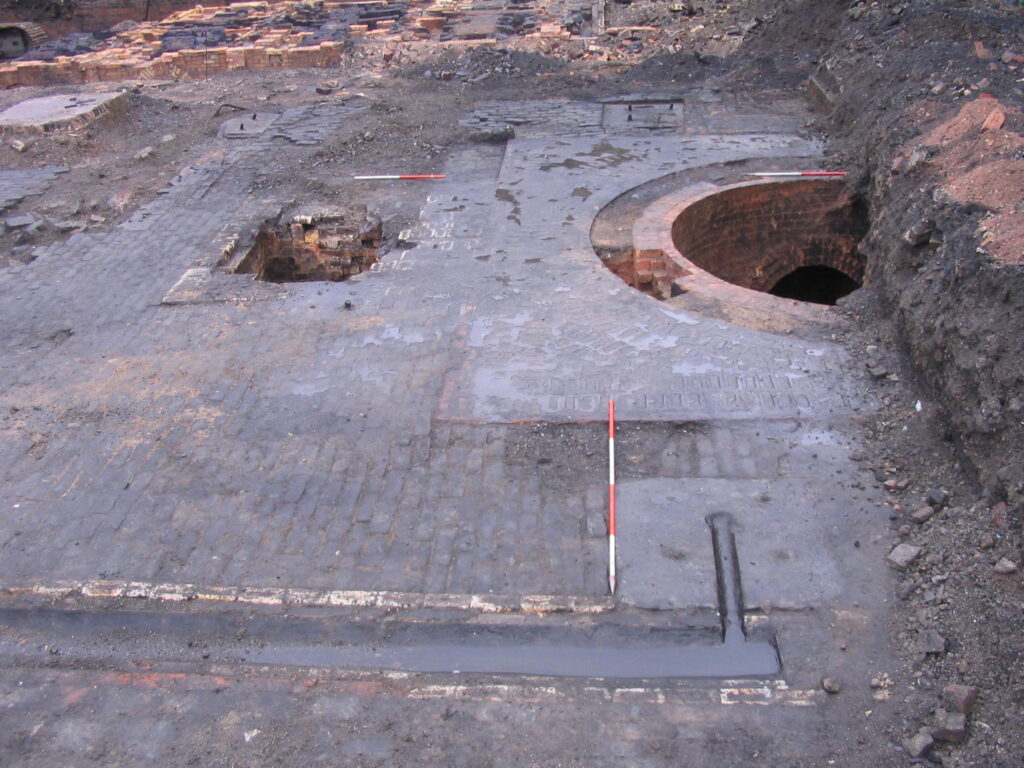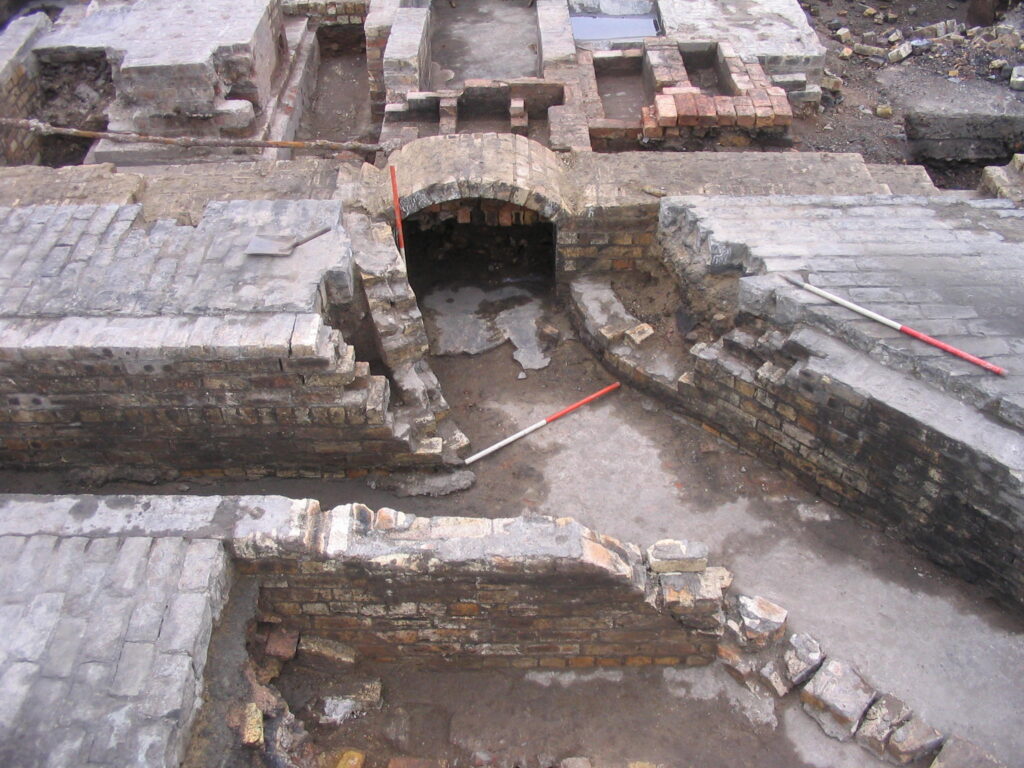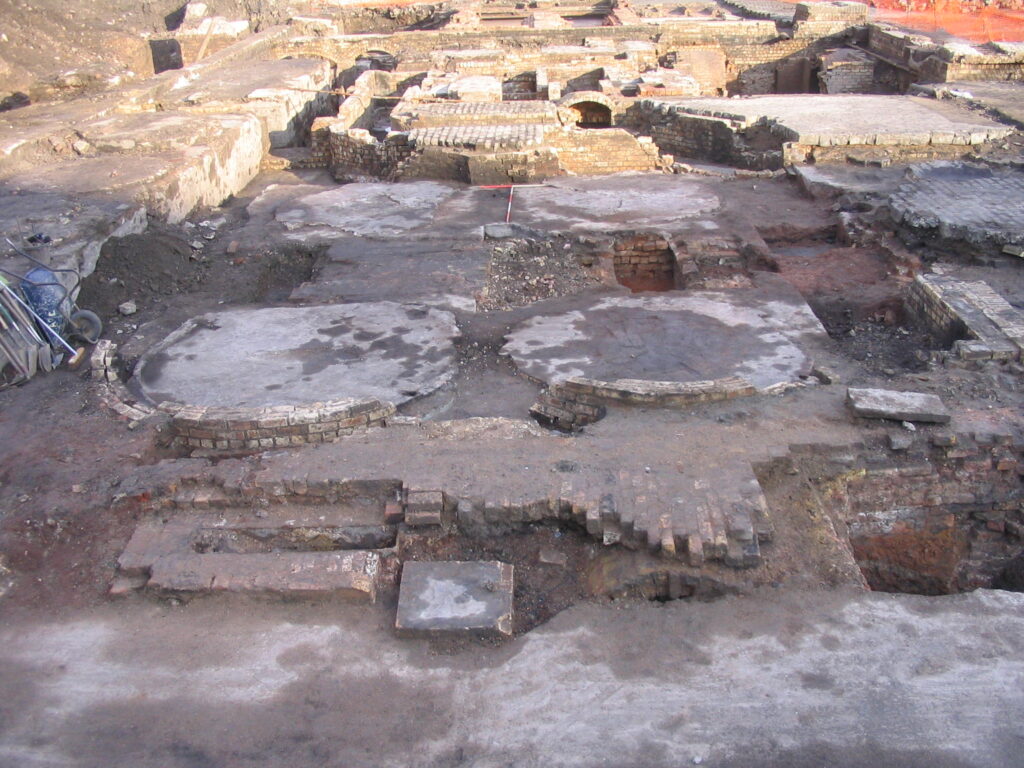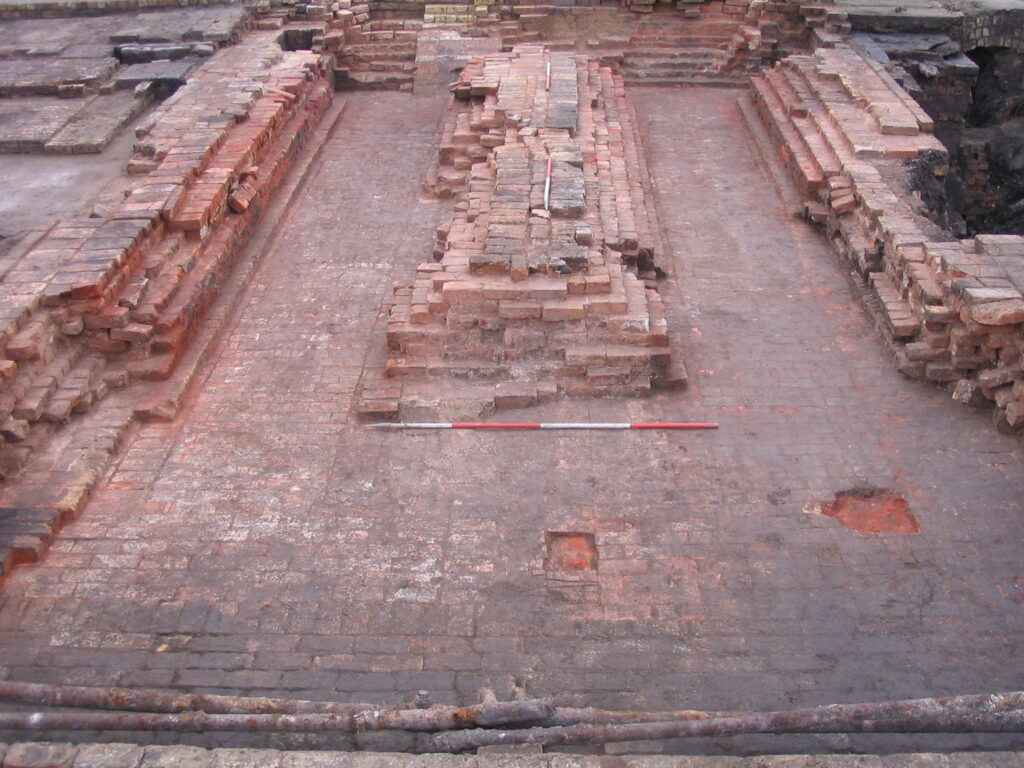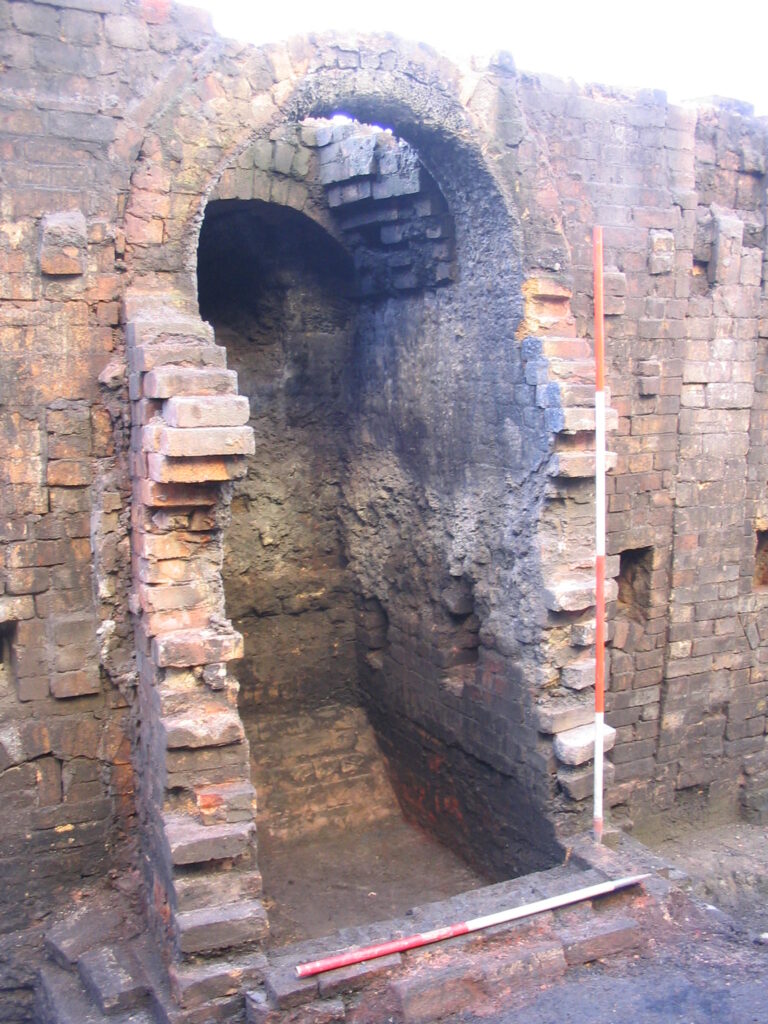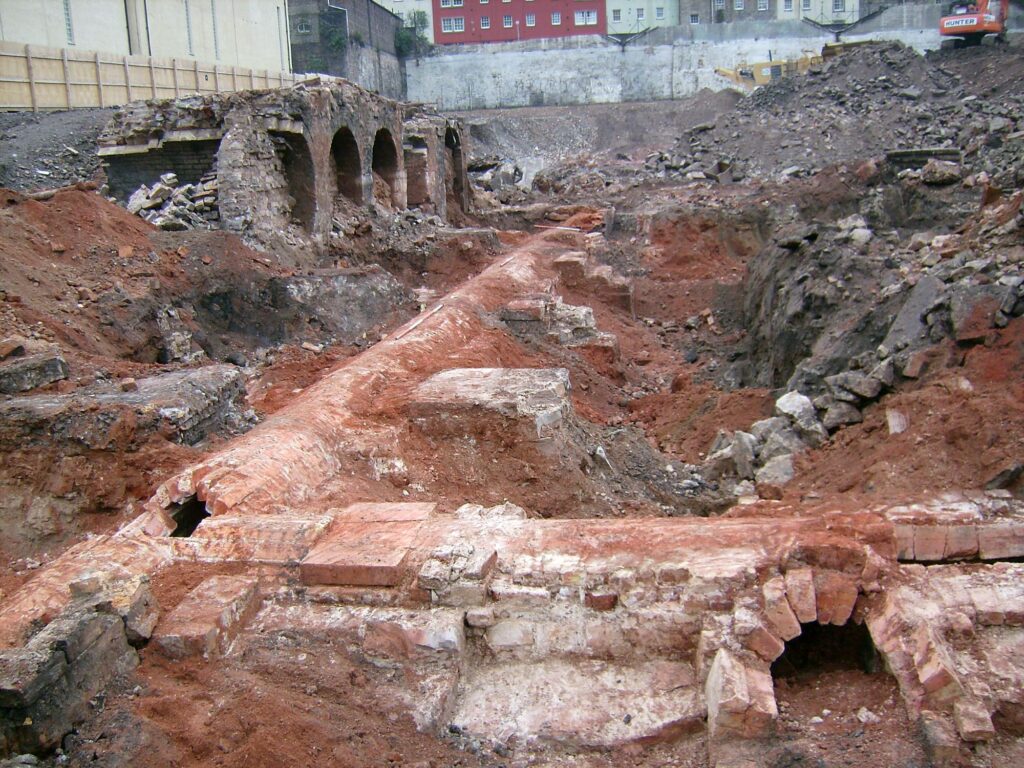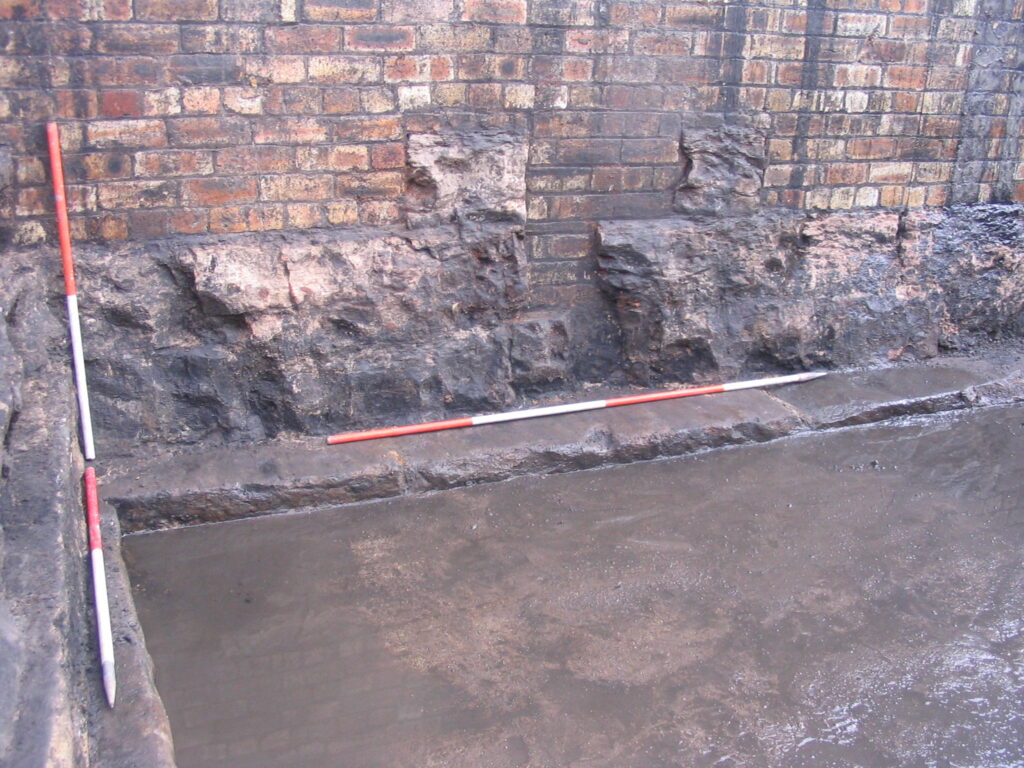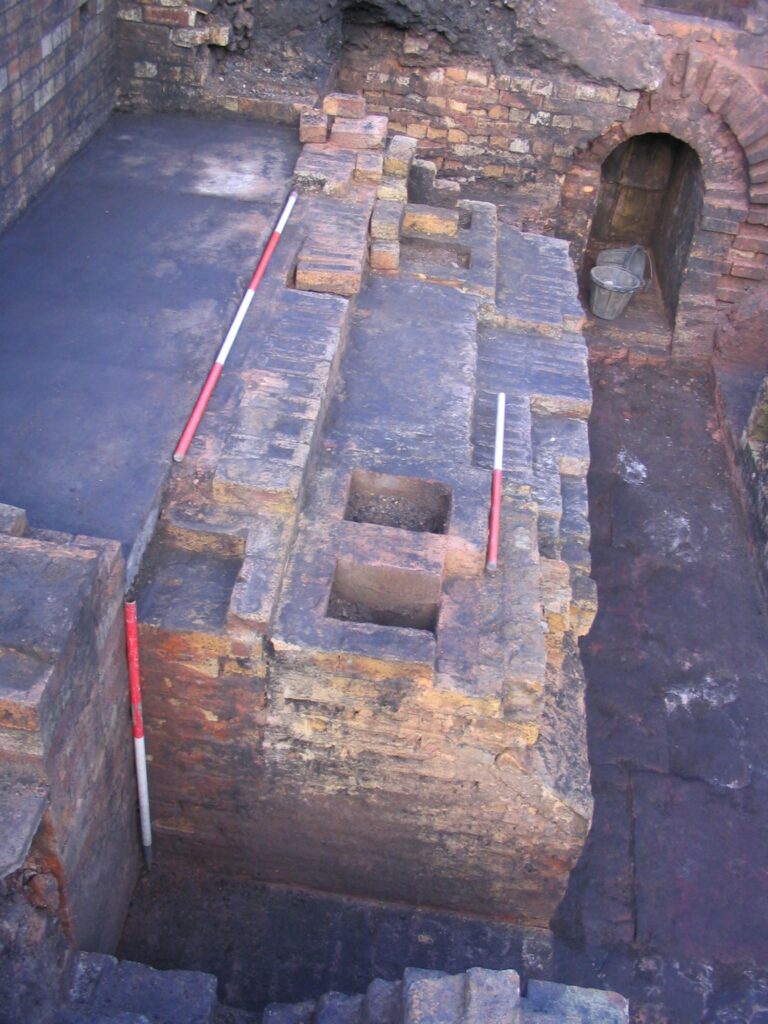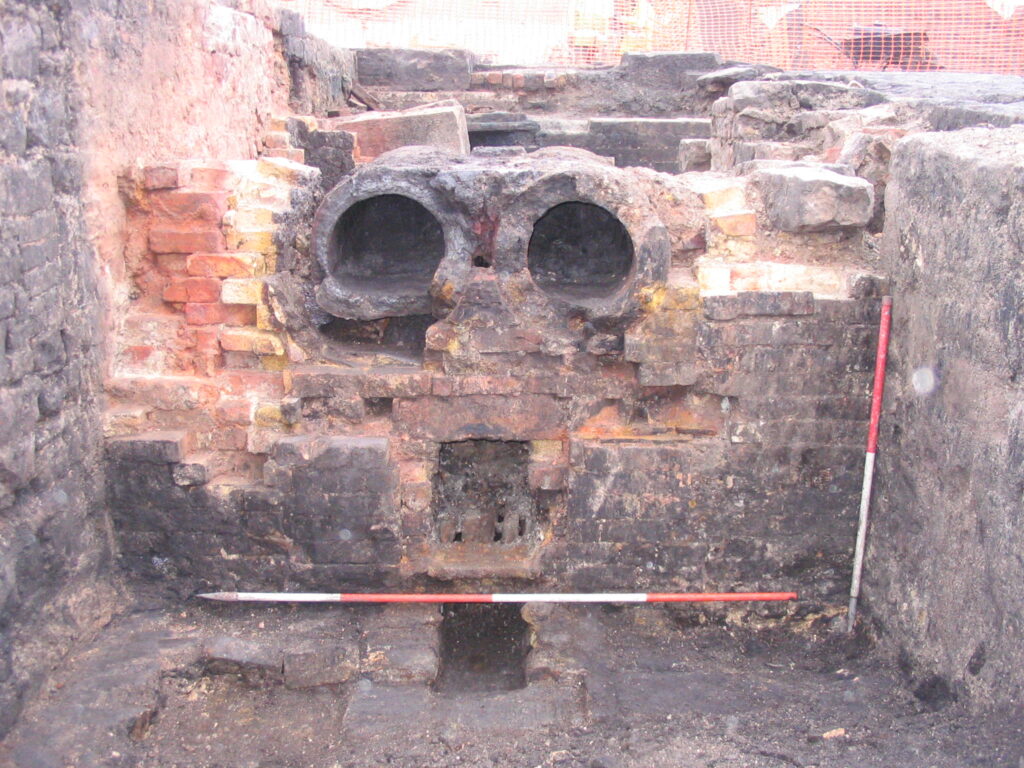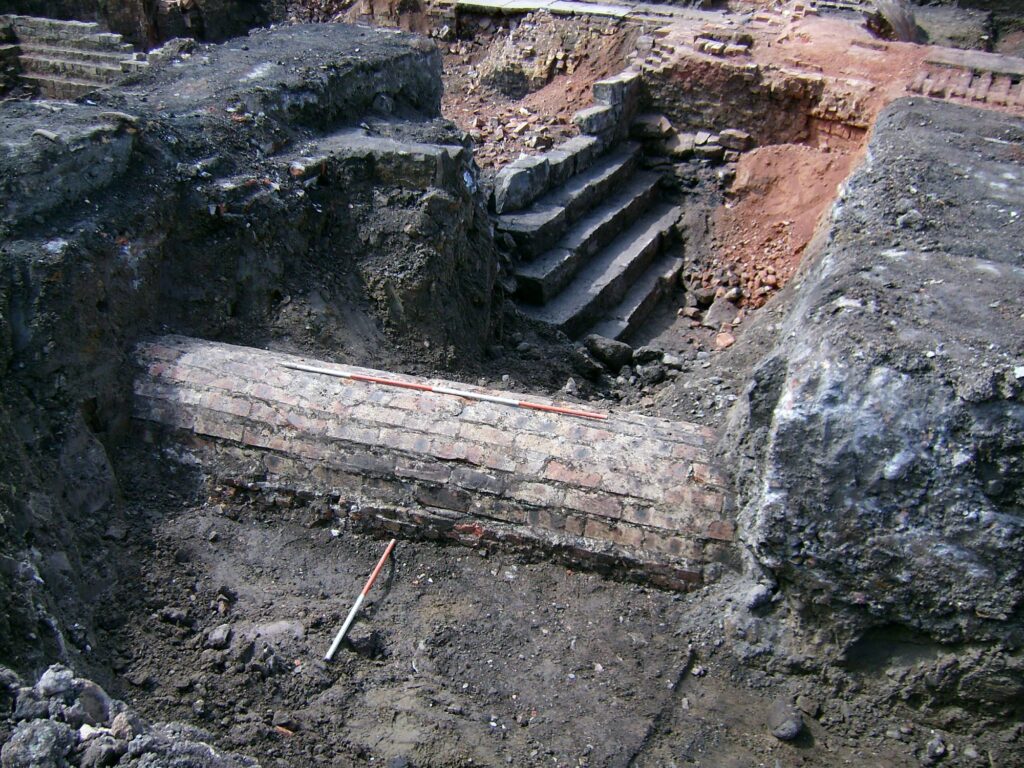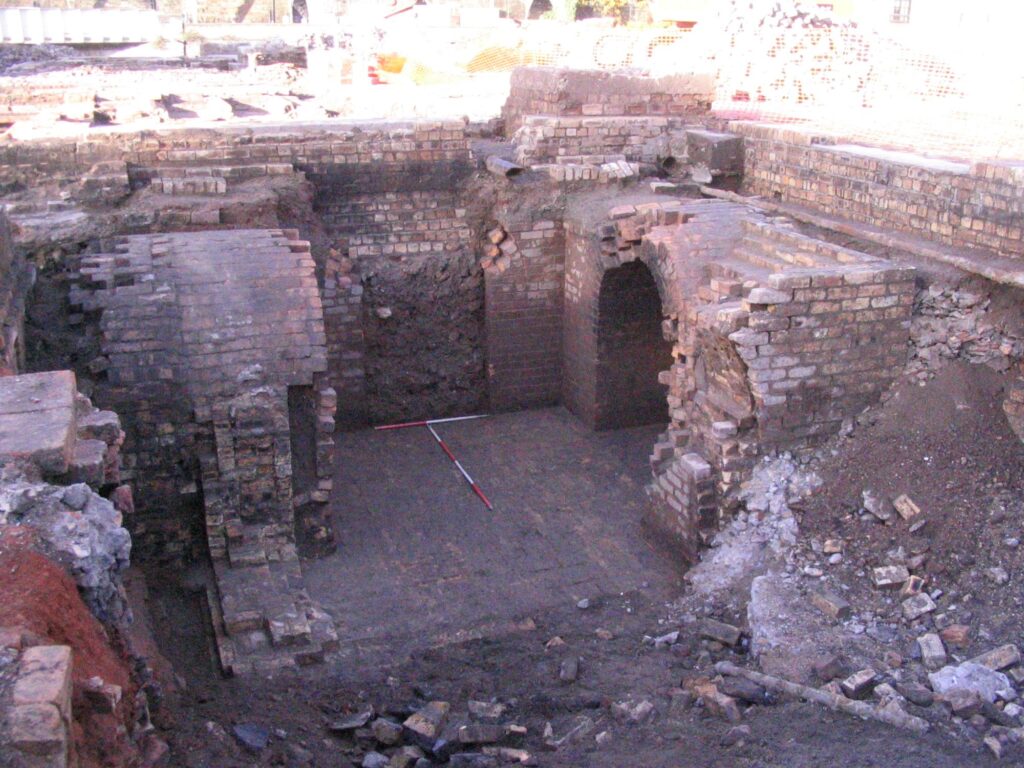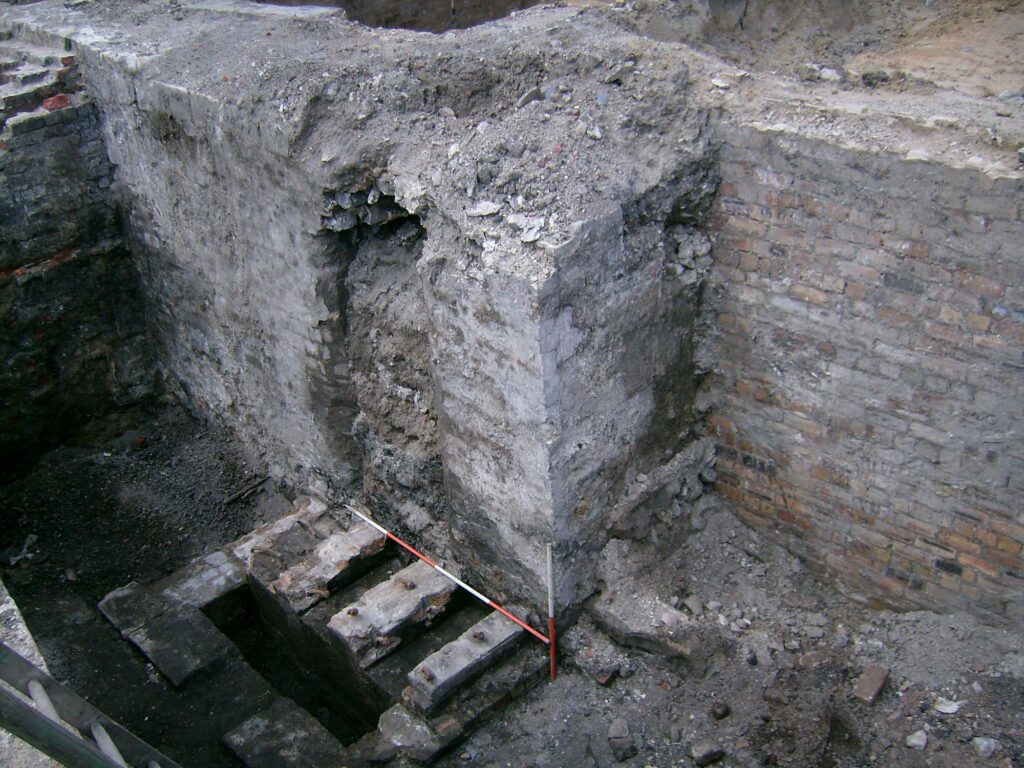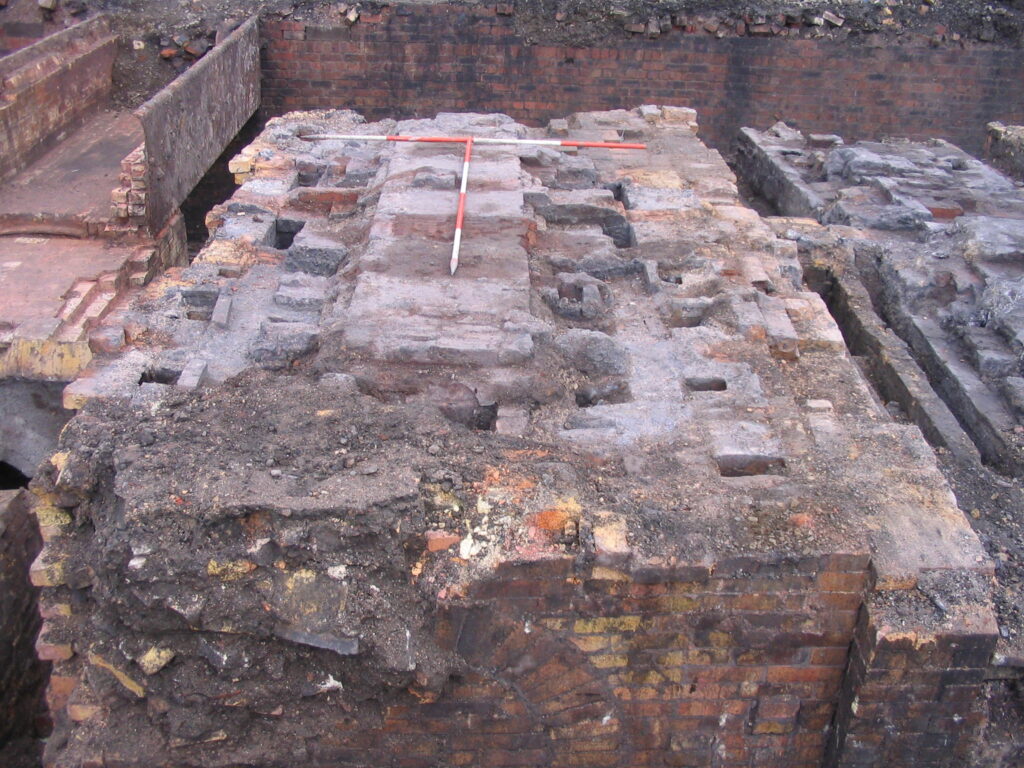Excavations at New Street Gasworks in Canongate, Edinburgh, uncovered one of the earliest and most significant gasworks in Britain. A complex array of buildings and industrial technology survived, shedding light on the evolution of the gasworks and its huge impact on society as it brought gas lighting to the people of Edinburgh.
AOC Archaeology undertook the excavations between 2006 and 2008, as advised by the City of Edinburgh Council Archaeology Service (CECAS). The post-excavation programme was funded by New Waverley Advisors Ltd.
Harnessing the ‘Spirit of Coals’
In 1684, Rev John Clayton of Wigan ignited gas collected from heated coals and named it ‘Spirit of Coals’. He was one of several people in the 17th century credited with the discovery of gas as a fuel. During the 18th century, gas was adopted for lighting in various private settings across Britain, but by the early 19th century, the industry expanded to large-scale public supply, heralding major social changes across the country.
The world’s first Municipal gasworks were established in Westminster in 1813 by the Gas Light and Coke Company. Only a few years later, Scotland’s first gasworks were set up in Edinburgh and Glasgow, with the longer winter nights fuelling a higher demand for gas in the north than in many English towns. The New Street Gasworks, established in Canongate in 1818, was one of the earliest in Britain and stood at the fore of many technological advancements.

Drawing horizontal retorts, South Metropolitan Gasworks, London, c late 19th century
A History of Canongate
Canongate forms the street leading west from Holyrood Abbey and the Palace of Holyroodhouse towards Edinburgh Castle. The area was bestowed burgh status around 1128 during the reign of David I and was a favoured route for royalty into the city. Many wealthy residents lived along the street, attracted by its proximity to Parliament and the Royal Palace.
During the medieval period, the street would have been lined with burgage plots, narrow strips of land with a building at the street front acting as a dwelling, booth, or brewhouse. Behind the buildings, the backlands formed gardens, semi-agricultural spaces, and workshops. Many traditional traders and craftspeople occupied the area, including masons, tailors, shoemakers, weavers, hatters, stablers, coachmakers, grocers, bakers, vintners, and brewers.
The status of Canongate diminished after the Act of Union in 1707 moved the Royal seat of power away from Edinburgh and dissolved the Scottish Parliament. The wealthy residents gradually left the area in the late 18th and early 19th centuries, leaving only the poorer folk behind, many of whom lived in one-room dwellings with their whole families. As the population increased, several new streets, including New Street, were built into the backlands, facilitating the construction of new industrial sites, such as the Gasworks, Canongate Iron Foundry, and the various Canongate breweries.
Map images can be viewed in full at the National Library of Scotland online map viewer.
Lighting Up Society
Prior to the use of public gas lighting, Edinburgh’s streets would have been lit by candle or oil lamps, most of which would have been extinguished around 9 or 10 o’clock. This made the streets dangerous and dirty places at night, as people disposed of waste out of windows or unsavoury characters prowled the darkened lanes and closes. The introduction of gas lighting to Edinburgh made the city a safer and more sociable place, removing the limitations that the hours of darkness placed on activities. It was safer to walk the streets at night, people could work longer hours, and Edinburgh’s industrial revolution could flourish.
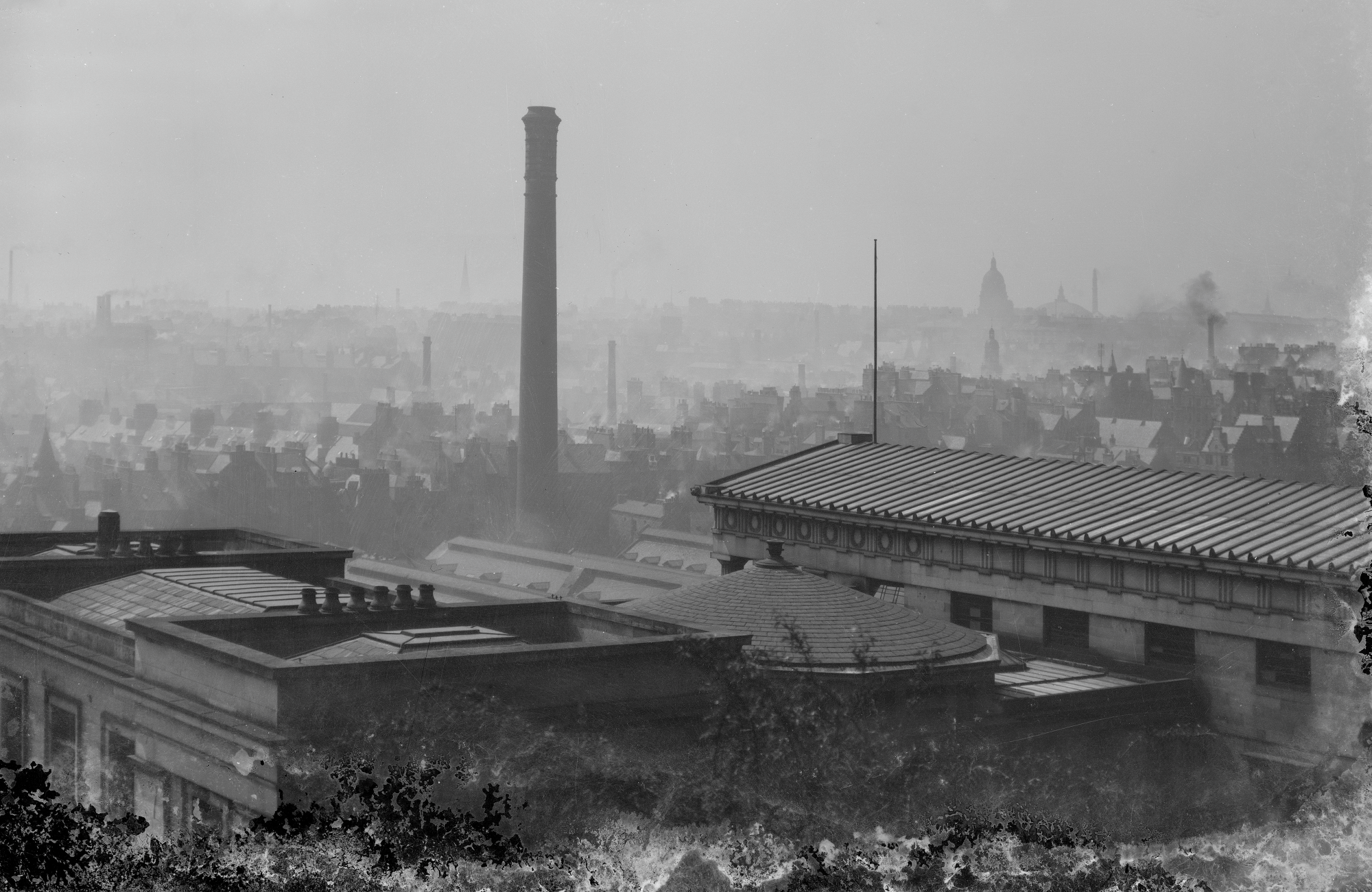
The New Street Gasworks chimney seen through the Edinburgh smog in the late 19th century © Courtesy of HES (Scottish Gas Collection).
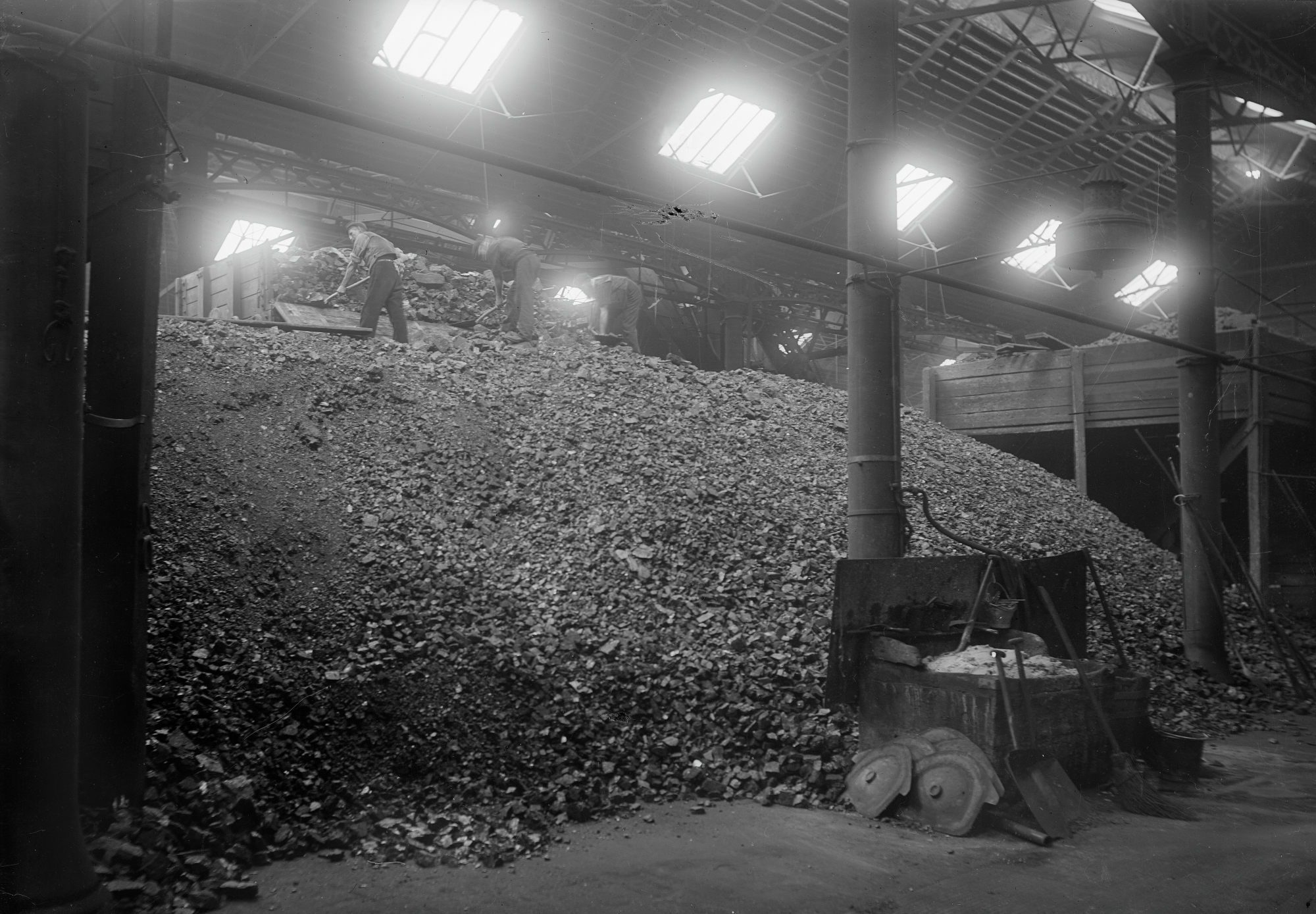
The New Street coal shed in operation © Courtesy of HES (Scottish Gas Collection).
The Dark Side of Gas
Despite the social benefits of gas lighting, those who lived and worked near the gasworks felt the negative effects of the industry in full force. Local residents complained of polluted water and noxious fumes in the air. Those working in the gasworks faced day to day physically demanding labour within the heat of furnaces and noxious gases. The corrosive gases produced during the processes were strong enough to degrade iron and steel, but while efforts were made to improve the durability of the metal fittings, less concern was given to the welfare of employees.
From Coal to Light
Gas was produced by heating coal in a closed tubular vessel, known as a retort. The heated coal gave off a mixture of hydrogen, methane, and carbon monoxide, which could be stored in gasholders for later use. The stored gas was then delivered to houses, streets, and other establishments through buried pipes, where it could be ignited to produce light.
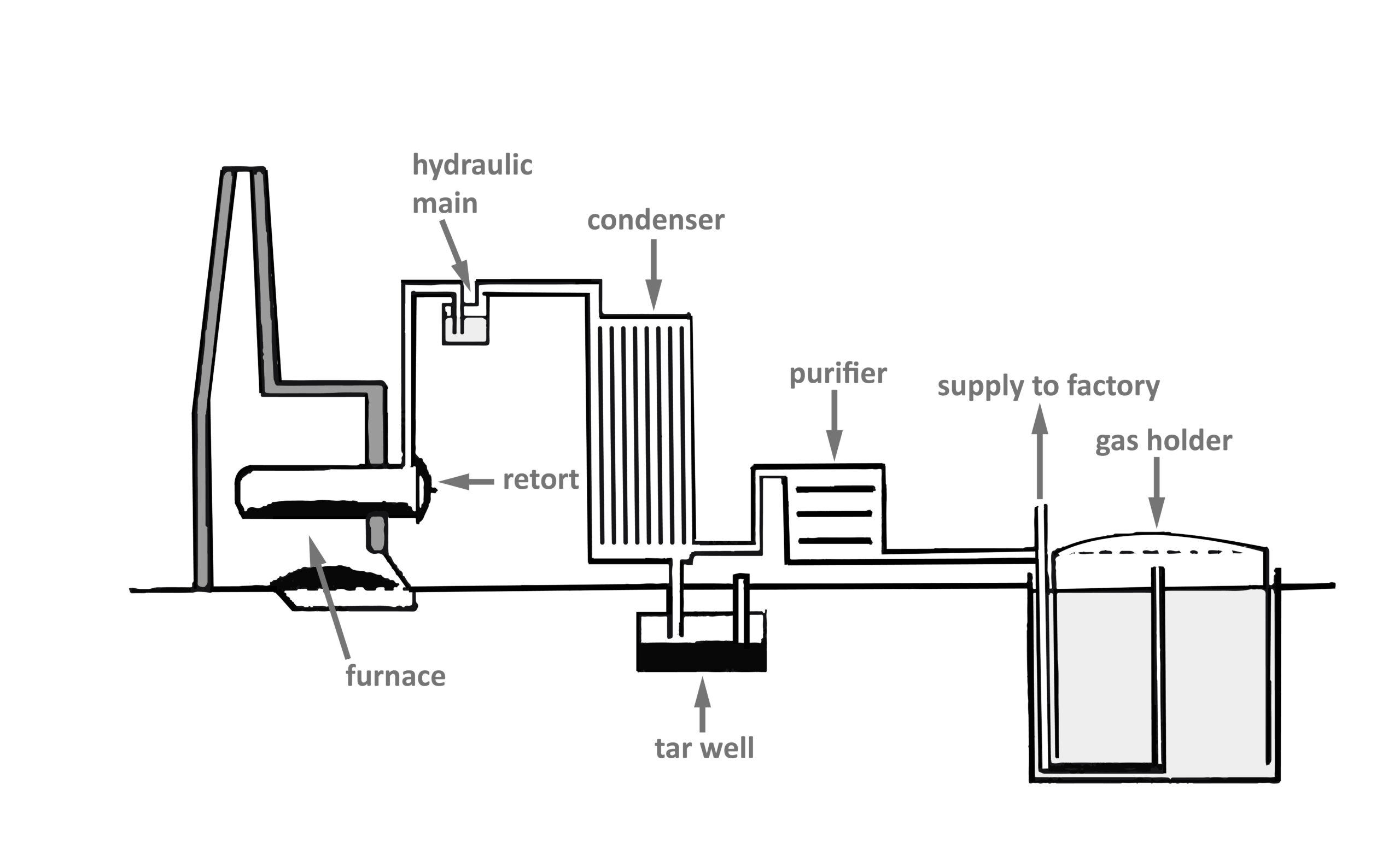
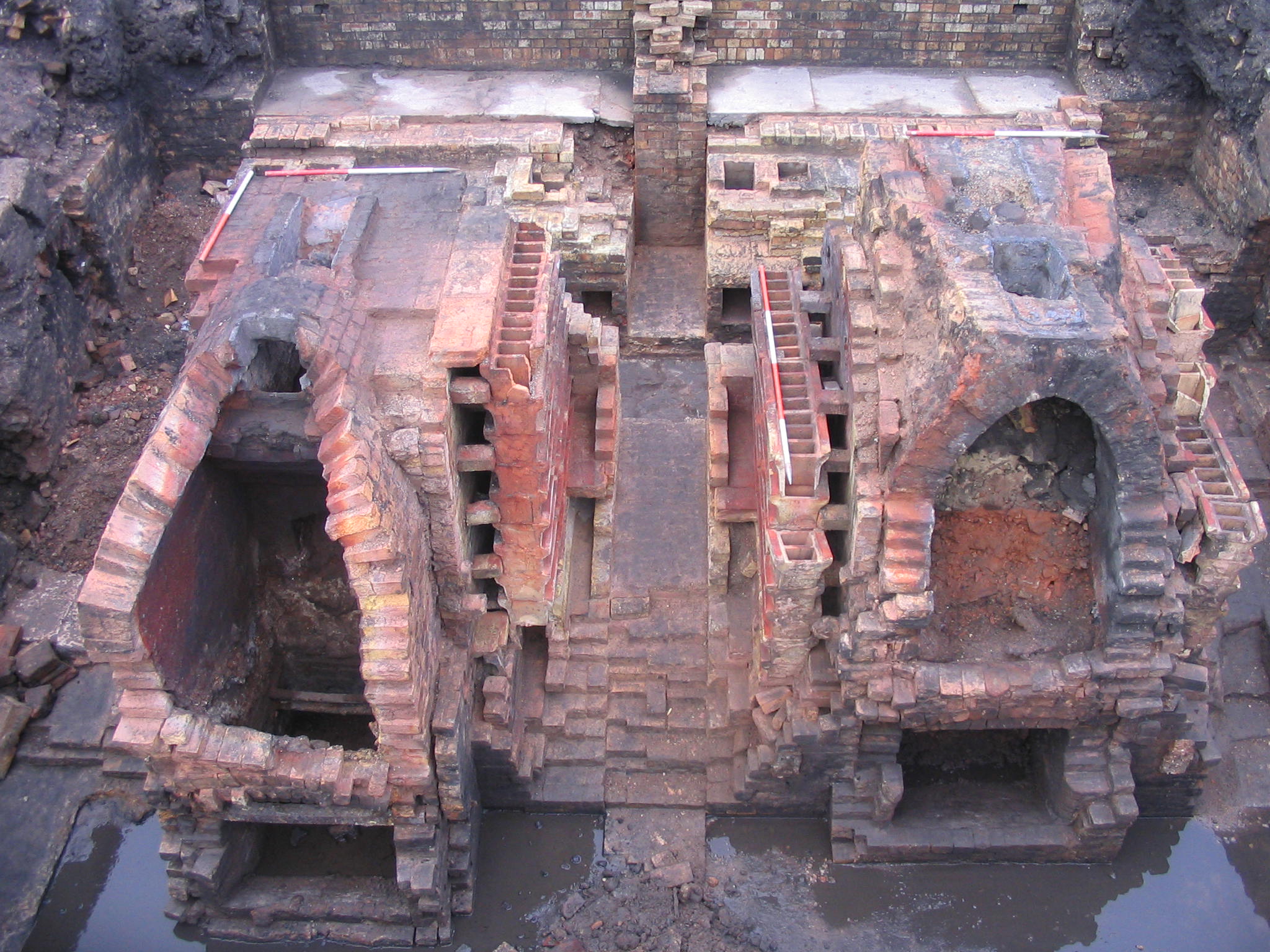 The Furnace provided the heat source for the retorts, often using residual coke as fuel.
The Furnace provided the heat source for the retorts, often using residual coke as fuel. 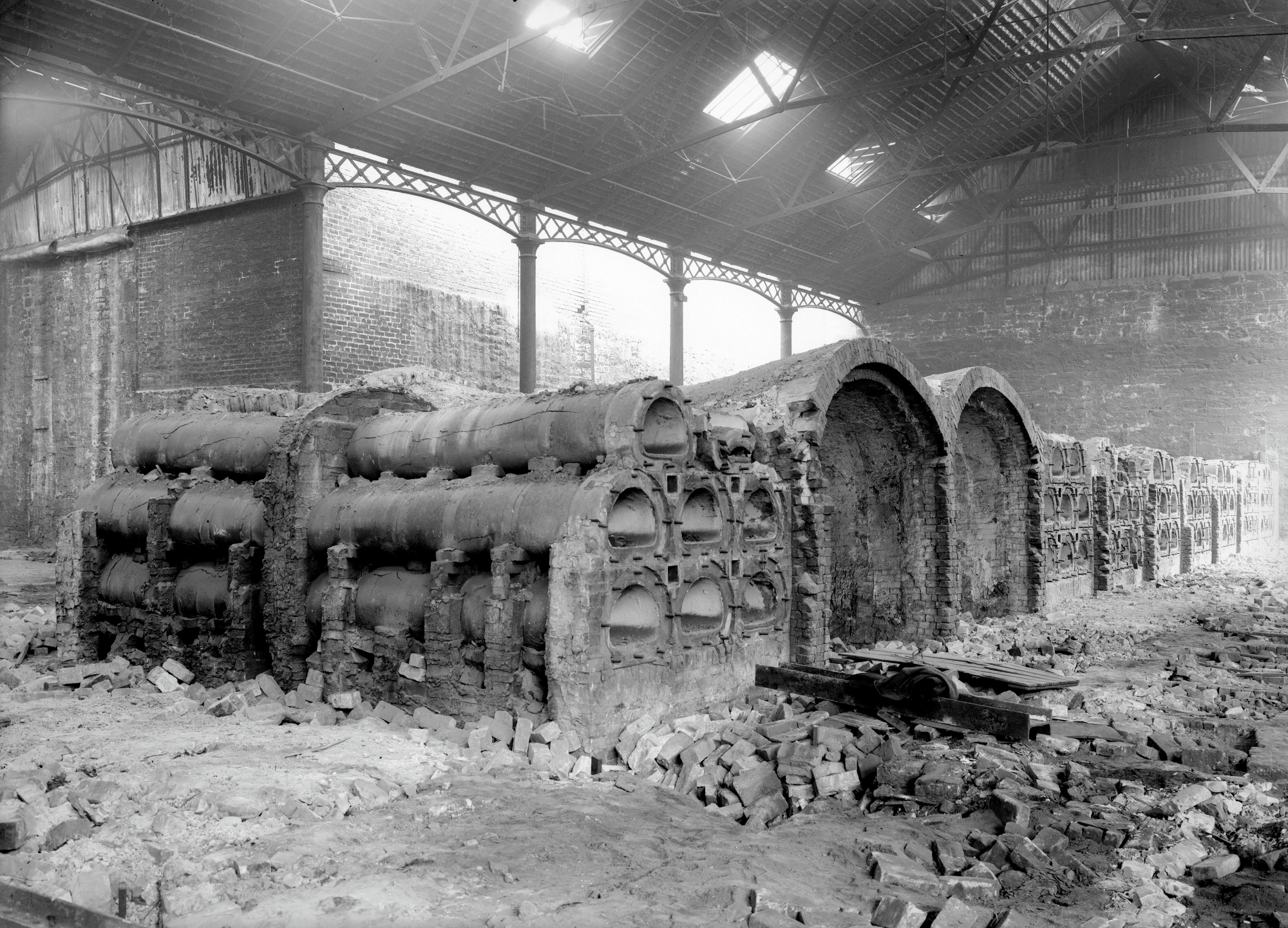 The Retorts were airtight cylinders that held the coal. Because of the sealed environment, the heat forced the gases out of the coal, leaving behind a residue called coke.
The Retorts were airtight cylinders that held the coal. Because of the sealed environment, the heat forced the gases out of the coal, leaving behind a residue called coke. Gas rose through pipes from the retorts through the Hydraulic Main, which created an underwater seal, preventing the gases from escaping and exploding when the retorts were opened.
 The Condenser cooled the gas, allowing volatile inclusions, such as tar, to be siphoned off as they cooled into liquids. These collected in the Tar Well.
The Condenser cooled the gas, allowing volatile inclusions, such as tar, to be siphoned off as they cooled into liquids. These collected in the Tar Well. After cooling, the gas passed through the Washer, the Scrubber, and the Purifier, which used water, lime and iron oxide to remove impurities from the gas.
Finally, the gas was stored in the Gas Holder before being distributed through pipes to consumers.



